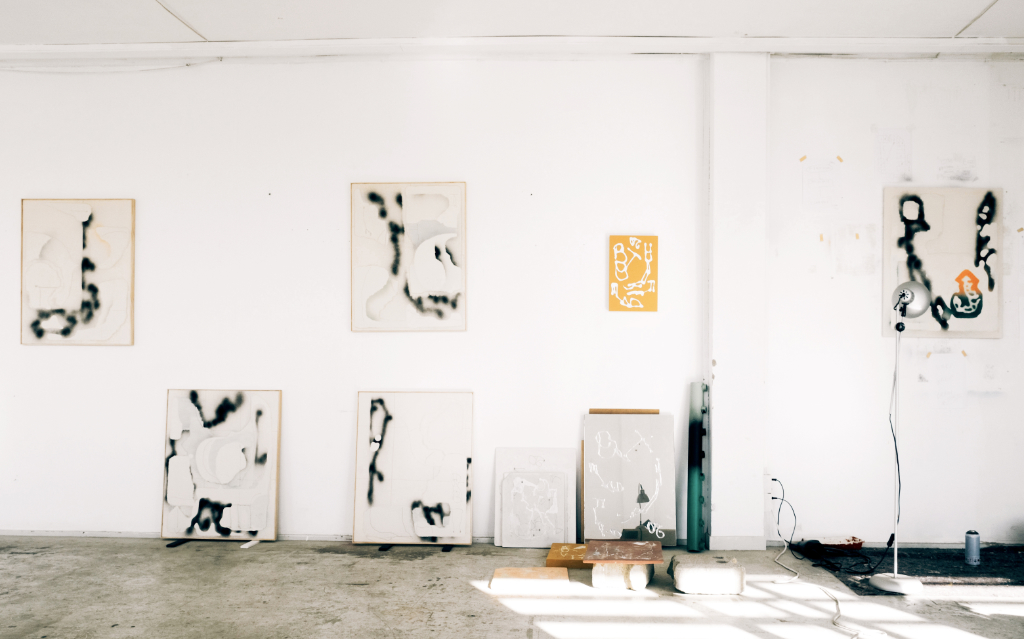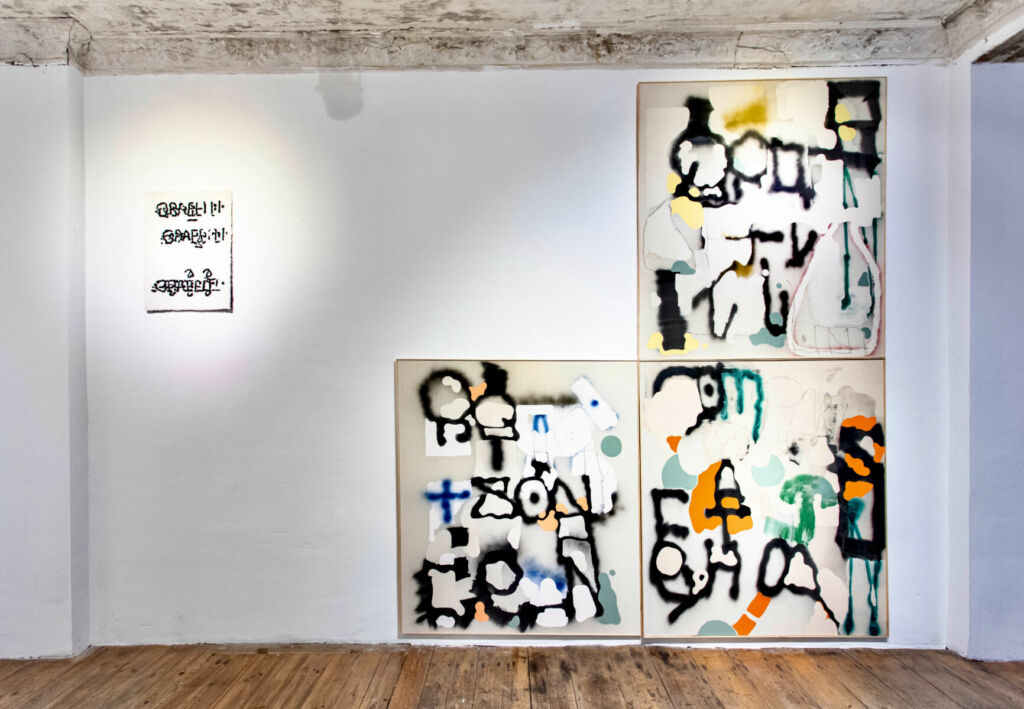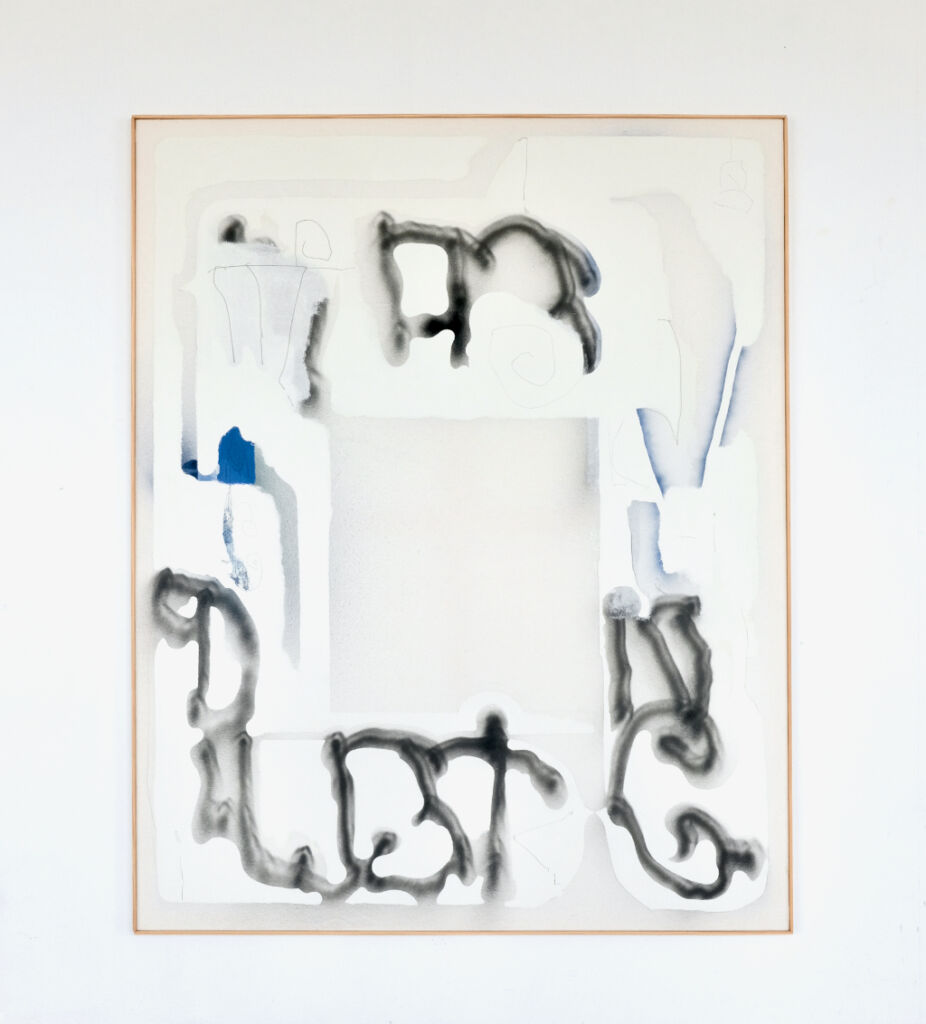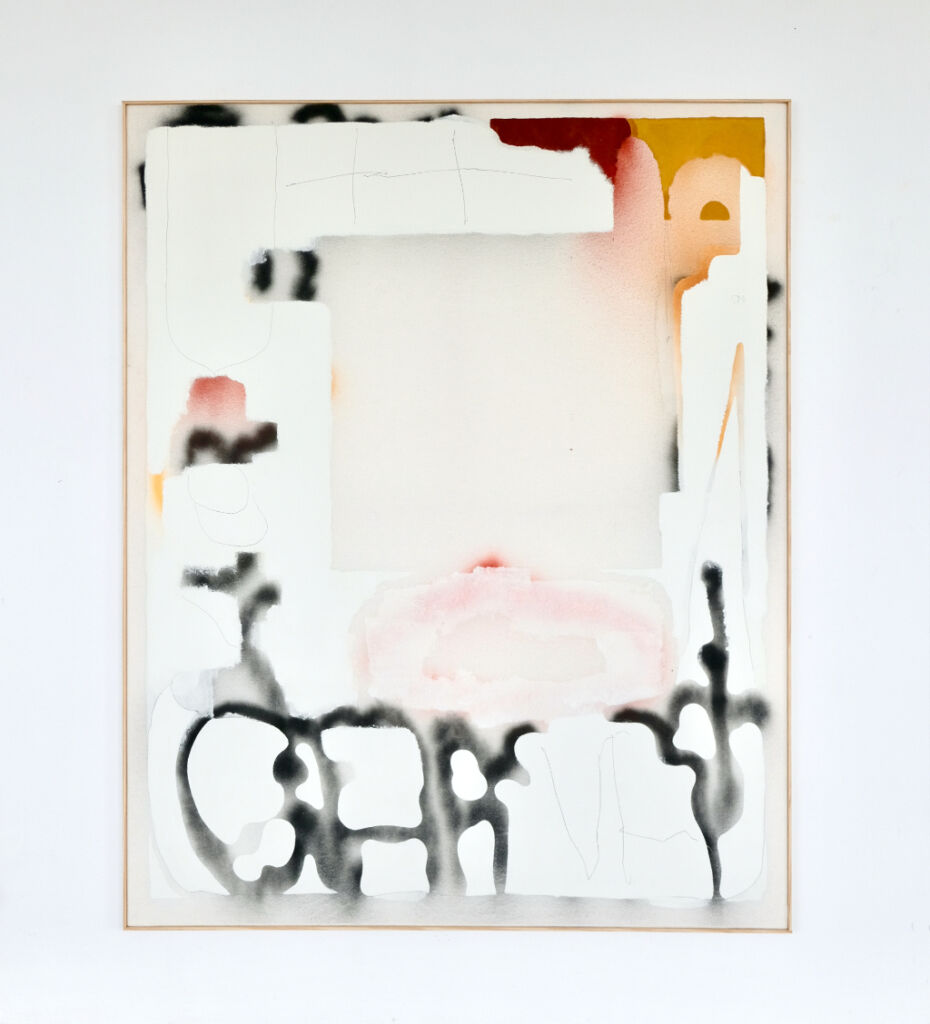Interview by Irem Erkin

German painter, designer, and graffiti writer Alsino Skowronnek seamlessly intertwined traditional graffiti and machine learning to pioneer an exploration into the synthesis of art and technology. Curiosity has always driven him to push the boundaries of artistic expression, focusing on creating new ways of bending letters into new forms, connecting different letter elements, and developing a unique style. In 2019, as a programmer, Alsino gravitated into the intriguing world of machine learning.
Fascinated by the personal signatures embedded in graffiti tags, he trained a machine learning model to discern the structural nuances of various tags. This revolutionary approach enabled him to generate “ghost tags” effortlessly by inputting text on a website, demonstrating the symbiotic relationship between human creativity and artificial intelligence.
Over the following years, Alsino’s exploration deepened as he delved into various machine learning models, with a penchant for generative models like pix2pix and styleGAN. These models, celebrated for their unique visual aesthetics, became the canvas on which Alsino painted the future of his artistic expression.
Navigating uncharted territory, he sought to integrate his digital programming background seamlessly with analog painting, thriving in a process that harmoniously merged the two disparate realms. Despite the absence of a predetermined blueprint, Alsino’s experimentation gave fruit as he identified algorithms that now form the foundation of the structural elements in his artwork.
These algorithms influence crucial aspects such as composition, context, and the final image, showcasing the blend of technological precision with artistic intuition. His artistic evolution serves as a testament to the transformative power of machine learning in the creative process.
His ability to combine traditional and cutting-edge techniques has resulted in visually stunning pieces and ignited a discourse on the evolving relationship between art and technology. As Alsino continues to pilot in this accelerated landscape, he remains a trailblazer, pushing the boundaries of contemporary expression of graffiti in the language of machine learning.




Please provide some insight into your background and the origin of your interest in merging machine learning with graffiti. What initially ignited your curiosity and drove you to explore the convergence of these two seemingly disparate fields in your artistic practices?
As a graffiti artist, my passion has always revolved around pushing the boundaries of letter forms, forging innovative connections between various letter elements, and cultivating a distinct style. Tags, the handcrafted signatures of graffiti writers, hold a particular fascination for me.
It was during my stint as a programmer in 2019 that I first encountered the realm of machine learning. Recognising its potential, I trained a rudimentary machine learning model to grasp the structural nuances of different tags.
This trained model became a pivotal tool in my creative process, enabling me to generate novel “ghost tags” effortlessly by inputting text on a dedicated website. To this day, these tags serve as foundational elements in my artworks. The breakthrough realisation for me was the existence of a creative nexus between my mind and the computer’s, providing a conduit for ideas that I couldn’t conceive independently.
How do you incorporate machine learning into your creative process? Are there specific techniques or algorithms that you find particularly influential?
I’ve experimented with various machine learning models and algorithms for the past few years, mainly focusing on generative models circa 2019/2020.
Initially drawn to the unique visual aesthetics offered by algorithms like pix2pix and styleGAN, I found the most thrilling challenge to integrate my digital practice—forged through programming and data visualisation—with my traditional analog painting process.
There was no established blueprint for such a fusion in the nascent stages of machine learning technology. It required extensive trial and error until I discovered a set of algorithms that resonated with my artistic vision.
Today, I incorporate the output of my machine learning models as structural elements in my paintings, constructing frameworks upon which I layer composition, context, and the final image. Despite the integration of these tools, I remain on the lookout for exciting new additions to enhance and elevate my upcoming projects.
How much autonomy do you grant the AI in the creative decision-making, and how does it collaborate with your artistic vision?
I view AI as a creative partner, both an inspiration source at the project’s inception and a collaborator in its culmination.
This role functions akin to a co-pilot in the cockpit of an airplane, aiding me in charting the course and revealing novel directions or unforeseen phenomena. However, I maintain control as the plane’s captain and prefer to guide it based on my instincts.
The production process becomes the flight, where I expand upon the initial concepts and allow them to evolve organically, driven by my intuition or whatever is on my mind.
In what ways do you find the collaboration with AI enriching or challenging in comparison to traditional graffiti creation?
AI helps me break visual boundaries by offering unconventional or random starting points. While this characteristic can occasionally introduce chaos to my thought process, it also instils in me the importance of relinquishing strict control during the painting process and relying on my intuition.
It requires adapting to and working with the visual material at hand. This approach is less linear than translating a well-defined idea into a painting. Yet, it feels more gratifying as it involves sculpting a finished piece from a previously random array of primitives.
As an artist, how do you navigate the learning curve of integrating machine learning into your creative practice? Are there aspects that you found particularly challenging or rewarding?
Exploring machine learning initially posed a challenge due to its technical nature and abundant jargon. Fortunately, my background in programming laid a foundation for grasping the fundamental concepts, enabling me to experiment with them. Immersing myself in the hands-on process of training custom models allowed me to delve deeper, gaining insights into the parameters and intricacies of each model.
However, the field’s rapid evolution, with new models and algorithms emerging daily, makes it challenging to keep pace, leaving little time to explore everything. I concentrate on specific technical aspects within my painting work, seeking to comprehend the field’s trajectory.
Moreover, I am increasingly intrigued by the societal implications as we witness the ongoing development of this technology.
In what ways do you think machine learning has influenced the aesthetics of your art? Are there specific elements or characteristics distinctly shaped by the use of AI?
AI has the intriguing capability to unveil new realms of imaginative imagery, adding a fresh dimension to the painting process, be it in the realm of graffiti or studio practice. I delight in working with the imperfect facets of AI, embracing images that appear unfinished or flawed as they offer a peek into the inner workings of the generating machine. These ‘raw aesthetics’ find a place in my artwork.
My curiosity lies in envisioning the internal mechanisms of AI systems and recognising the inherent challenge humans face in comprehending the exact processes within these algorithmic ‘black boxes.’ Through my paintings, I endeavour to transport myself to a space where I can glean a deeper understanding of these systems, not necessarily in a rational sense but on a conscious level.
Can you tell us more about the concept behind your solo exhibition, Excavation Trail?
The exhibition “Excavation Trail” was a solo exhibition at the beginning of 2023 at the Piramidón Centre for Contemporary Art in Barcelona. The core concept of the exhibition, featuring a curated collection of paintings, was to present works generated through a method of ‘digital excavation.’
Each painting encapsulated various material layers, formed by merging and overlaying abstract letter structures from AI output.
The final compositions, reminiscent of assigning meaning to prehistoric artifacts during ground excavation, were carefully crafted for each piece. These paintings served as a reflective exploration of my artistic process, with the metaphor of ‘excavation’ aptly capturing the essence of the creative journey.
Recently, you published the book Gradient Descent – An Experimental Collaboration between a Graffiti Writer and a Machine with your friends Alone, Theodor Guelat, and Team Flight Mode. Please share with us this beautiful collaboration between neural and railway networks.
The basic idea of this book – which we have been working on for over two years – was to infuse new technological approaches and digital aesthetics into graffiti. It posed the intriguing question: what happens when a machine collaborates with a graffiti writer?
This endeavour led us into uncharted territories, fostering excitement and prompting us to devise strategies for reimagining the discipline of graffiti. Our goal was to introduce innovative perspectives while honouring the raw essence of graffiti’s origins.
The project also involved a process of ‘unlearning,’ challenging the unconscious absorption of rules accumulated over more than two decades in the discipline. “Gradient Descent” seeks to amalgamate elements of pioneering, experimentation, modification, and the translation of old-school aesthetics into the contemporary digital age. It aims to preserve and, at times, challenge the fundamental structures of graffiti.
How do you envision AI’s continued integration into your future artistic approach?
My creative journey involves a continuous exploration of incorporating emerging technologies into my work. Given the swift pace of developments in this realm, I find it essential to narrow my focus to specific areas that ignite my curiosity. Presently,
I am keen on experimenting with integrating large language models into the painting process. Given that these models operate with text rather than images, I am discerning the opportunities they may offer for my artistic endeavours. The ongoing experimentation is underway, and I eagerly anticipate the unfolding possibilities that this exploration may unveil.
And ultimately, as an artist exploring the intersection of AI aesthetics and traditional art forms, where do you see the future of this kind of artistic expression heading?
We are witnessing a significant upsurge in creative and artistic output facilitated by artificial intelligence. While I am enthusiastic about experimenting with the integration of machine learning in my artistic practice, there is a sense of scepticism regarding the enduring impact of AI tools on creativity in society at large.
This concern stems from these tools’ formidable power, speed, and ease of use, creating a compelling incentive for their widespread integration into our daily workflows.
While this integration holds the potential to enhance overall productivity, there is a legitimate apprehension that it might devalue and diminish specific creative skills such as drawing, painting, and writing.
What is your chief enemy of creativity?
Too many emails, life administration and doing taxes.
You couldn’t live without…
Peanut butter.






